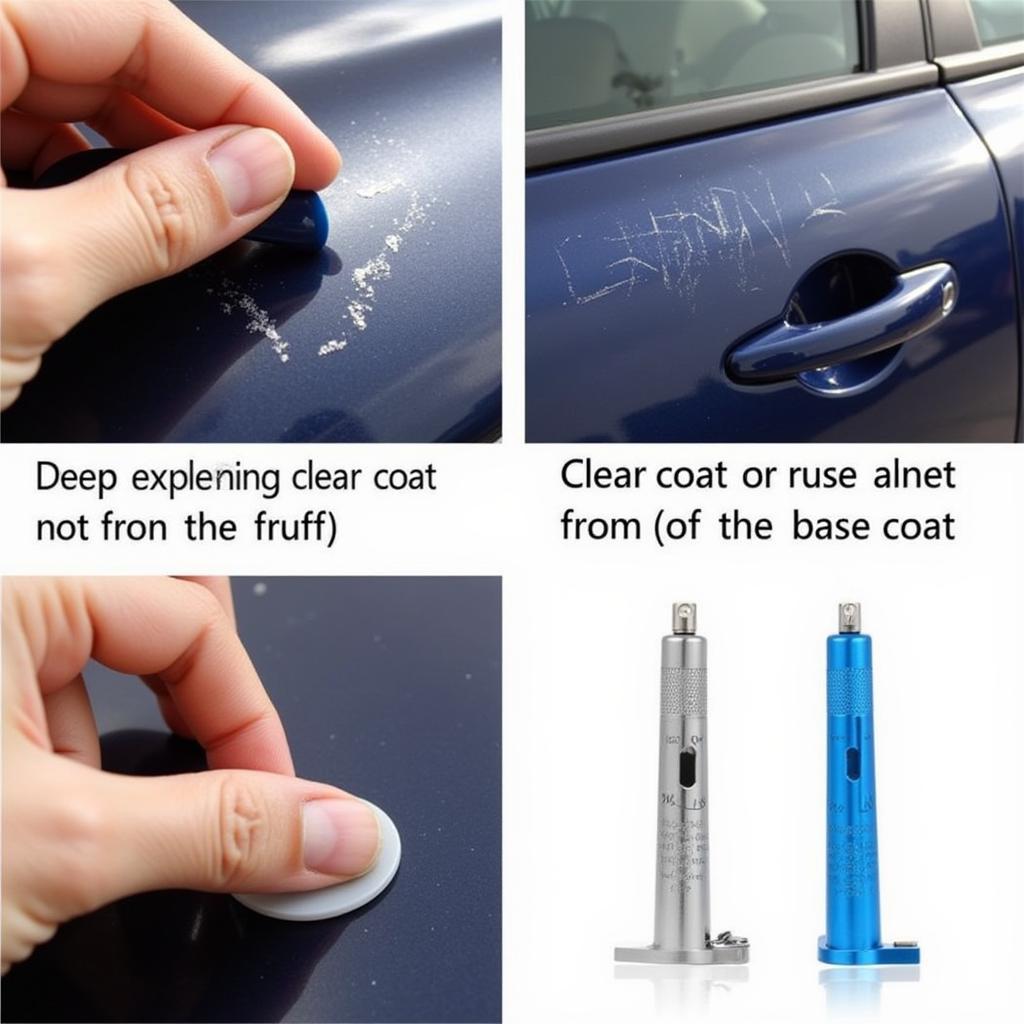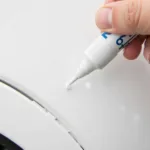Car paint repair can seem daunting, but with the right knowledge and approach, you can achieve professional-looking results. This guide provides a comprehensive overview of car paint repair, covering everything from minor scratches to more serious damage. Whether you’re a DIY enthusiast or considering professional help, this guide will equip you with the necessary information to make informed decisions.
Do you have minor scratches or chips in your car’s paint? Learning DIY techniques can save you money and time. For larger areas of damage, understanding professional repair options is crucial. This car paint repair guide will delve into both, giving you the power to restore your car’s finish effectively. From assessing the damage to selecting the right tools and techniques, we’ll cover every step of the process. Check out our guide on how to repair scratched car paint DIY for some helpful tips.
Assessing the Damage: Knowing Your Car’s Needs
Before starting any car paint repair, it’s essential to assess the extent of the damage. Is it a light scratch, a deep gouge, or perhaps paint peeling? Accurately identifying the problem will dictate the appropriate repair method. Light scratches often only affect the clear coat and can be addressed with polishing compounds. Deeper scratches that reach the base coat require more involved techniques like touch-up paint and clear coat application. For severe damage like peeling paint, you might need to consider professional solutions like repainting sections of the car.
If you’re dealing with significant paint peeling, you should definitely check out our guide on car paint peeling off repair.
 Assessing Car Paint Damage for Effective Repair
Assessing Car Paint Damage for Effective Repair
DIY Car Paint Repair: Minor Scratch and Chip Repair
For minor scratches and chips, DIY car paint repair is a cost-effective option. Start by thoroughly cleaning the affected area with car wash soap and water. Then, use a rubbing compound and a polishing pad to smooth out the scratch. For deeper scratches, apply touch-up paint carefully, ensuring it matches your car’s color. After the touch-up paint dries, apply clear coat to protect the repair and blend it with the surrounding paint. Finally, polish the area again to achieve a smooth, even finish. Remember to work in a well-ventilated area and follow the manufacturer’s instructions for each product.
Professional Car Paint Repair: When to Seek Expert Help
While DIY car paint repair can be effective for minor damage, more extensive repairs often require professional expertise. If you’re dealing with large areas of damage, deep scratches, or significant paint peeling, seeking a professional is recommended. Professionals have the experience, tools, and knowledge to achieve a flawless finish. They can also handle complex color matching and blending, ensuring the repaired area seamlessly integrates with the rest of the car’s paint.
Need car paint repair in Texas? Visit our car paint repair texas page for local resources.
Choosing the Right Repair Method: Factors to Consider
Several factors influence the choice between DIY and professional car paint repair. Cost is a significant consideration, as DIY repairs are generally less expensive. The extent of the damage also plays a crucial role. Minor scratches are suitable for DIY, while more serious damage necessitates professional intervention. Your level of experience and comfort with car repair tasks should also be factored in. If you’re not confident in your abilities, it’s best to leave it to the professionals.
Preventing Future Damage: Protecting Your Car’s Paint
Once your car’s paint is repaired, take steps to prevent future damage. Regularly washing and waxing your car helps protect the paint from environmental elements and minor scratches. Parking in covered areas or using a car cover can shield your car from sun damage and bird droppings. Applying paint protection film can also provide an extra layer of defense against scratches and chips. These proactive measures can help maintain your car’s paint job and keep it looking its best for years to come.
If you need a touch-up for a white car, consider a white gloss chip scratch car paint repair pen.
Conclusion: Maintaining a Flawless Finish
Car paint repair, whether DIY or professional, is essential for maintaining your car’s appearance and value. By understanding the different repair methods, assessing the damage accurately, and taking preventative measures, you can keep your car looking its best. From minor touch-ups to more extensive repairs, this car paint repair guide empowers you to make informed decisions and achieve a flawless finish.
FAQ
- How do I match touch-up paint to my car’s color?
- Can I repair clear coat scratches myself?
- What is the best way to remove bird droppings from car paint?
- How often should I wax my car?
- What is paint protection film, and is it worth it?
- Where can I find reliable car paint repair services in St Albans? Consider checking out car paint repair st albans.
- What are the signs that my car needs professional paint repair?
Common Car Paint Repair Scenarios
- Scenario 1: Light Scratches and Swirl Marks: These are often easily addressed with a polishing compound and a dual-action polisher.
- Scenario 2: Stone Chips: Touch-up paint and clear coat are usually sufficient for repairing stone chips.
- Scenario 3: Deep Scratches: These might require sanding, priming, and repainting the affected area.
- Scenario 4: Paint Peeling: Professional intervention is generally necessary for addressing paint peeling issues.
Further Resources
For more information on specific car paint repair topics, check out our articles on car paint peeling off repair.
Need Help? Contact Us!
For immediate assistance, please reach out to us via WhatsApp: +1(641)206-8880 or Email: [email protected]. Our 24/7 customer support team is ready to assist you.

